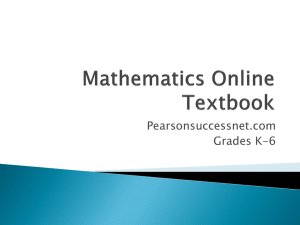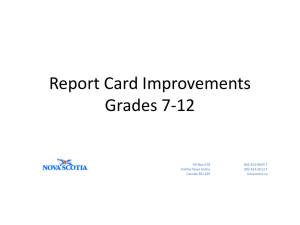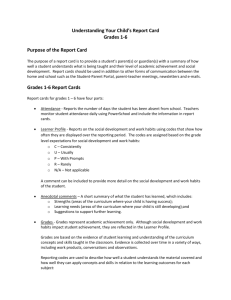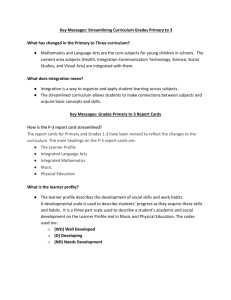doc, 64kb - Public Schools of North Carolina
advertisement
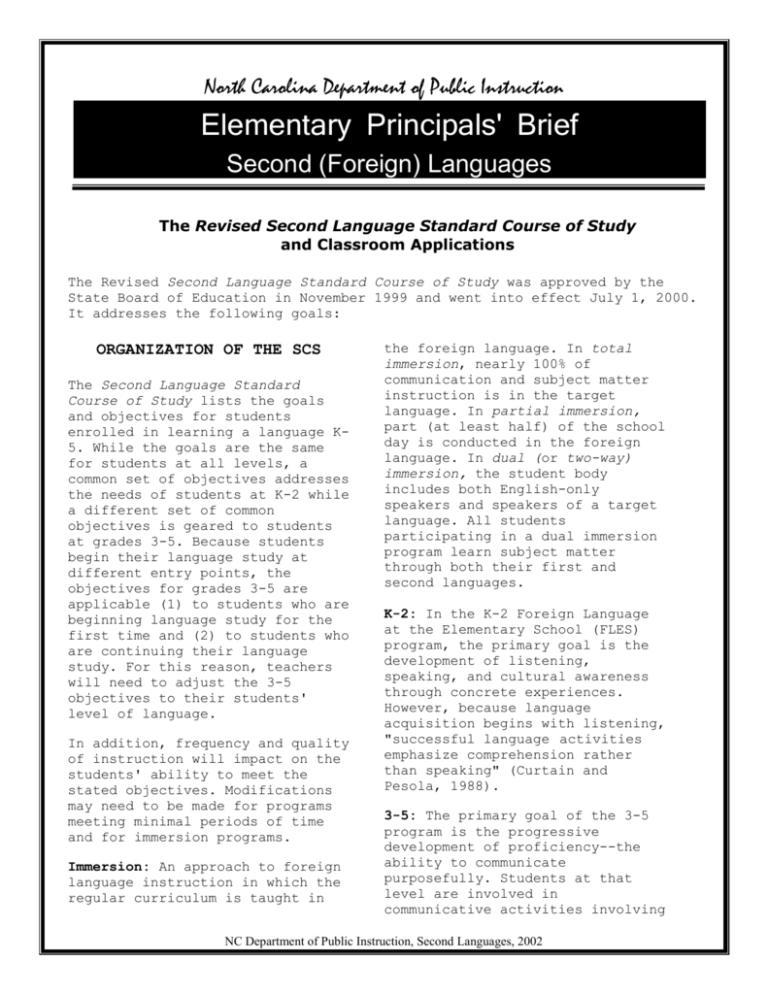
North Carolina Department of Public Instruction Elementary Principals' Brief Second (Foreign) Languages The Revised Second Language Standard Course of Study and Classroom Applications The Revised Second Language Standard Course of Study was approved by the State Board of Education in November 1999 and went into effect July 1, 2000. It addresses the following goals: ORGANIZATION OF THE SCS The Second Language Standard Course of Study lists the goals and objectives for students enrolled in learning a language K5. While the goals are the same for students at all levels, a common set of objectives addresses the needs of students at K-2 while a different set of common objectives is geared to students at grades 3-5. Because students begin their language study at different entry points, the objectives for grades 3-5 are applicable (1) to students who are beginning language study for the first time and (2) to students who are continuing their language study. For this reason, teachers will need to adjust the 3-5 objectives to their students' level of language. In addition, frequency and quality of instruction will impact on the students' ability to meet the stated objectives. Modifications may need to be made for programs meeting minimal periods of time and for immersion programs. Immersion: An approach to foreign language instruction in which the regular curriculum is taught in the foreign language. In total immersion, nearly 100% of communication and subject matter instruction is in the target language. In partial immersion, part (at least half) of the school day is conducted in the foreign language. In dual (or two-way) immersion, the student body includes both English-only speakers and speakers of a target language. All students participating in a dual immersion program learn subject matter through both their first and second languages. K-2: In the K-2 Foreign Language at the Elementary School (FLES) program, the primary goal is the development of listening, speaking, and cultural awareness through concrete experiences. However, because language acquisition begins with listening, "successful language activities emphasize comprehension rather than speaking" (Curtain and Pesola, 1988). 3-5: The primary goal of the 3-5 program is the progressive development of proficiency--the ability to communicate purposefully. Students at that level are involved in communicative activities involving NC Department of Public Instruction, Second Languages, 2002 the skills of listening, speaking, pre-reading and pre-writing activities through oral language. Reading and writing are introduced as natural extensions of oral language. Much time is devoted to pre-writing and pre-reading activities in order to elicit prior knowledge. The amount of time devoted to reading and writing will vary depending on the students' level of language and on the amount of time available for language class. materials such as songs, short narratives, simple poems, rhymes and cartoons. Continuing students will also be involved in reading and will be able to select main ideas and make inferences from what they have read. SECOND LANGUAGE GOALS PRESENTATIONAL COMMUNICATION The learner will present information, concepts, and ideas to an audience of listeners or readers on a variety of topics in the target language. INTERPERSONAL COMMUNICATION - The learner will engage in conversation and exchange information and opinions orally and in writing in the target language. In the foreign language class, In the foreign language class, you should see students naming and describing people, places, and things, performing songs and short poems, or retelling stories orally. Continuing students will use more complex language and will write words and phrases associated with visual, props, or familiar contexts. you should see teacher and students (grades K-2) using the target language orally in a variety of interactive and reallife situations involving exchanging personal information, sharing likes and dislikes, and asking and answering questions. Students in grades 3-5 may participate in group and pair work. Writing is introduced in grades 3-5 as an extension of oral language and much time is devoted to pre-writing activities. INTERPRETIVE COMMUNICATION The learner will understand and interpret written and spoken language on a variety of topics in the target language. In the foreign language class, you should see students listening to directions and commands, and understanding key words from a variety of print and non-print CULTURES - The learner will gain knowledge and demonstrate understanding of the relationship among practices, products, and perspectives of cultures other than his/her own. In the foreign language class, you should see students using appropriate verbal and non-verbal behavior from the target cultures and participating in age-appropriate cultural practices. You should see students in grades 3-5 locating the different target countries and identifying people and products associated with them. COMPARISONS - The learner will develop insight into the nature of language and culture by comparing his/her own NC Department of Public Instruction, Second Languages, 2002 language(s) and culture(s) to others. In the foreign language class, you should see students identifying similarities and differences between tangible and intangible products of the target cultures and their own. You also should see students developing an awareness that behaviors may differ among cultures. In upper grades (grades 3-5) you should see students relating vocabulary (e.g., cognates, loan words, idiomatic expressions), sound system, and syntax to their own language. You should also see students contrasting cultural elements (e.g., verbal and non verbal language, traditions, behaviors, accomplishments) to those of their own culture. CONNECTIONS - The learner will acquire, reinforce, and further his/her knowledge of other disciplines through the foreign language. PTA presentations, festivals, or community celebrations. You should also see students in grades 3-5 creating materials (books, cassettes, brochures) for others, interacting with their peers in other schools, states, or countries through letter exchanges, e-mails, and accessing authentic materials through technology. For additional information contact: Fran Hoch, 919/807-3864 fhoch@dpi.state.nc.us Bernadette Morris 919/807-3865 bmorris@dpi.state.nc.us 301 N. Wilmington Street Raleigh, NC 27601-2825 http://www.learnnc.org/dpi/instserv.nsf/category9 http://www.NCPublicSchools.org In the foreign language class, you should see students working with ageappropriate information, skills, and concepts from other disciplines. You should also see students recognizing, developing and applying learning strategies for use in other disciplines. COMMUNITIES - The learner will use language and/or demonstrate cultural knowledge and understanding within and beyond the school setting for personal, educational, and professional growth and enrichment. In the foreign language class, you should see students taking the language out of the classroom by sharing what they know with others in their community, by participating in NC Department of Public Instruction, Second Languages, 2002



